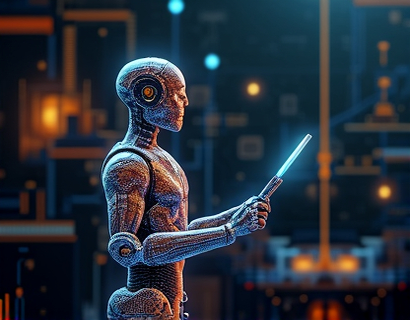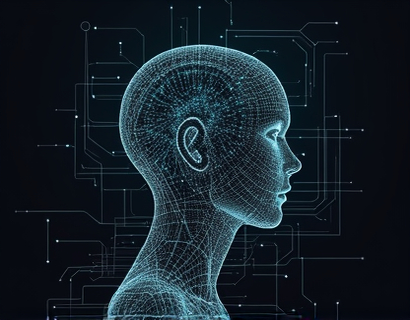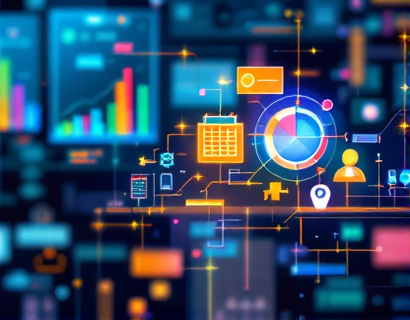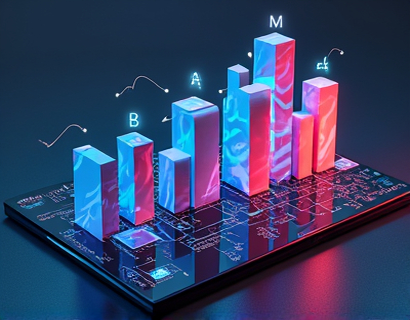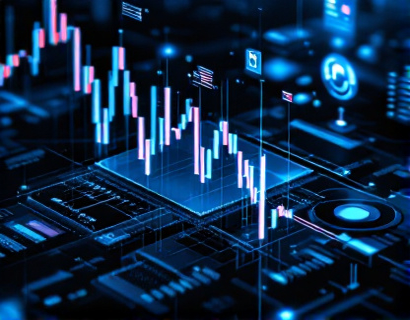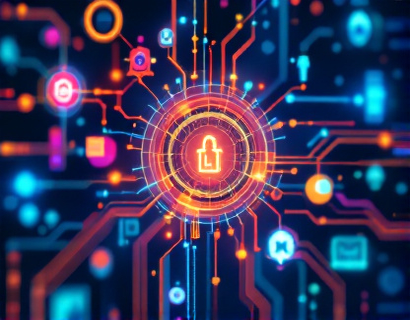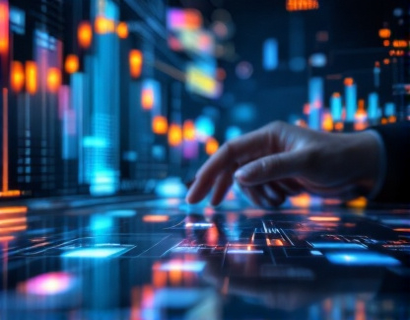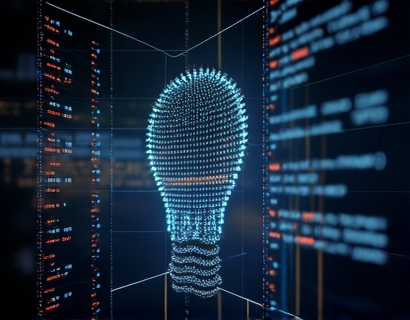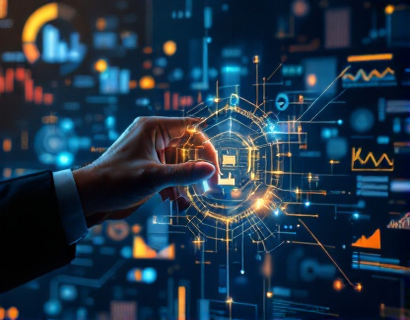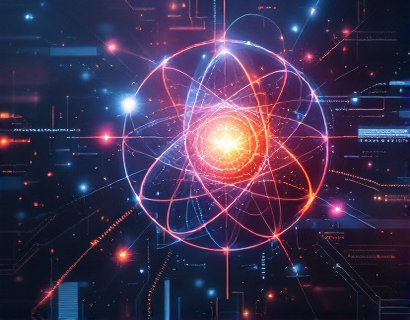Maximizing Digital Transformation: Leveraging AI and Crypto for Advanced Ecosystem Solutions
The digital landscape is undergoing a profound transformation, driven by the convergence of artificial intelligence (AI) and blockchain technology. This fusion, often referred to as BlockchainAI, is revolutionizing the way businesses operate, offering unprecedented levels of efficiency, security, and innovation. In this article, we will explore the synergy between blockchain and machine learning, and how this powerful combination can enhance business operations and propel growth, providing a competitive edge in the rapidly evolving digital market.
The integration of AI and blockchain is not just a technological trend but a necessity for organizations aiming to stay relevant and competitive. AI brings intelligence, automation, and predictive capabilities to the table, while blockchain offers transparency, immutability, and decentralization. Together, they create a robust framework for building advanced ecosystem solutions that can transform industries ranging from finance and healthcare to supply chain and beyond.
Understanding Blockchain and AI
To fully appreciate the potential of BlockchainAI, it's essential to understand the fundamental concepts of both technologies.
Blockchain is a distributed ledger technology that ensures data integrity and security through cryptographic hashing and consensus mechanisms. It allows multiple parties to transact and share data without the need for a central authority, reducing the risk of fraud and increasing trust.
Artificial Intelligence, on the other hand, encompasses a range of technologies that enable machines to perform tasks that traditionally required human intelligence. These include machine learning, natural language processing, and computer vision. AI systems can analyze vast amounts of data, identify patterns, and make predictions, significantly enhancing decision-making processes.
The combination of these two technologies creates a synergy that amplifies their individual strengths. Blockchain provides a secure and transparent environment for AI algorithms to operate, while AI enhances the functionality and efficiency of blockchain-based systems.
Enhancing Security with Blockchain and AI
Security is a paramount concern in the digital age, and the integration of blockchain and AI offers robust solutions to protect sensitive data and prevent cyber threats.
Blockchain's inherent security features, such as cryptographic hashing and decentralized consensus, make it an ideal platform for securing data. Each transaction is encrypted and linked to the previous one, forming an unbreakable chain. This makes it extremely difficult for malicious actors to alter or tamper with the data.
AI complements blockchain security by providing advanced threat detection and response mechanisms. Machine learning algorithms can analyze network traffic, identify anomalies, and predict potential security breaches in real-time. This proactive approach to security ensures that threats are detected and mitigated before they can cause significant damage.
Moreover, AI can enhance the privacy of blockchain transactions through techniques like homomorphic encryption and zero-knowledge proofs. These methods allow data to be processed and verified without revealing sensitive information, maintaining user privacy while ensuring data integrity.
Improving Efficiency through Automation and Smart Contracts
One of the most significant benefits of combining blockchain and AI is the automation of complex processes. Smart contracts, self-executing contracts with the terms directly written into code, can be enhanced with AI to perform more sophisticated tasks.
AI can analyze data and conditions in real-time, triggering smart contracts to execute automatically when predefined criteria are met. This eliminates the need for manual intervention, reducing delays and errors. For instance, in supply chain management, AI can monitor inventory levels and automatically initiate purchase orders when stock falls below a certain threshold, ensuring smooth operations and cost savings.
Additionally, AI can optimize the performance of blockchain networks by predicting and managing network congestion, adjusting consensus mechanisms, and improving transaction processing speeds. This ensures that blockchain-based systems remain efficient and scalable, even as the volume of transactions increases.
Driving Innovation with Data Analytics
The combination of blockchain and AI opens up new possibilities for data analytics, enabling organizations to gain deeper insights and make more informed decisions.
Blockchain provides a tamper-proof and transparent record of all transactions, which can be leveraged by AI algorithms to perform comprehensive data analysis. This data can be used to identify trends, forecast market movements, and optimize business strategies. For example, in the financial sector, AI can analyze transaction data on a blockchain to detect fraudulent activities and improve risk management.
Moreover, AI can help in the governance and management of blockchain networks by analyzing performance metrics and suggesting improvements. This data-driven approach ensures that blockchain systems are continuously optimized for better performance and reliability.
Case Studies and Real-World Applications
Several industries have already begun to harness the power of BlockchainAI, achieving remarkable results.
In the healthcare sector, a leading hospital system implemented a blockchain-based patient record management system enhanced with AI. This system not only ensures the security and privacy of patient data but also uses AI to analyze medical records and provide personalized treatment recommendations. The result is improved patient care and operational efficiency.
In the supply chain industry, a major retailer used a blockchain platform to track the origin and movement of products, integrated with AI for demand forecasting and inventory management. This integration reduced supply chain disruptions, minimized waste, and enhanced customer satisfaction.
Another notable example is in the finance industry, where a bank deployed a blockchain-based trading platform with AI-driven algorithms for real-time market analysis and automated trading. This has led to faster transaction processing, reduced operational costs, and increased profitability.
Challenges and Considerations
While the potential of BlockchainAI is vast, there are several challenges and considerations that organizations must address to successfully implement these technologies.
First, the technical complexity of integrating blockchain and AI requires a skilled workforce. Organizations need to invest in training and hiring professionals who are proficient in both areas.
Second, scalability remains a significant challenge. Blockchain networks, especially public ones, can face limitations in transaction throughput. AI can help mitigate this by optimizing network performance, but it's crucial to design scalable solutions from the outset.
Third, regulatory compliance is a critical factor. As blockchain and AI are still evolving, regulatory frameworks are still developing. Organizations must stay informed about legal requirements and ensure their implementations comply with existing laws.
Future Outlook
The future of BlockchainAI is promising, with ongoing advancements expected to further enhance its capabilities. As technology matures, we can anticipate more seamless integration, improved performance, and broader adoption across various industries.
One area of focus will be the development of interoperable blockchain platforms that can seamlessly interact with AI systems. This will enable more complex and sophisticated applications, opening up new possibilities for innovation.
Another exciting development is the integration of blockchain with other emerging technologies like the Internet of Things (IoT) and 5G networks. This convergence will create smart, connected ecosystems that can revolutionize how we live and work.
In conclusion, the fusion of blockchain and AI represents a transformative force in the digital world. By leveraging the strengths of both technologies, organizations can achieve higher levels of security, efficiency, and innovation, positioning themselves for success in the digital age.








